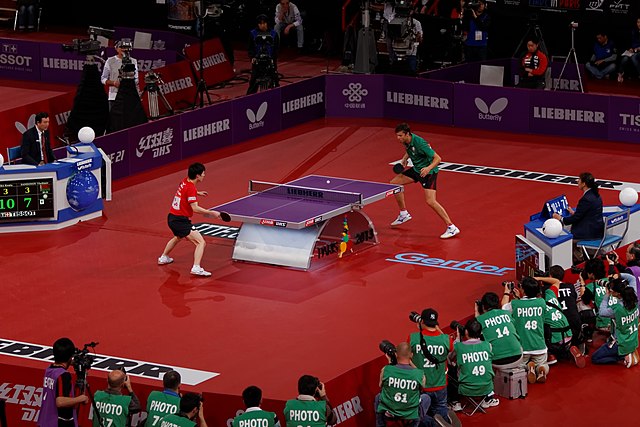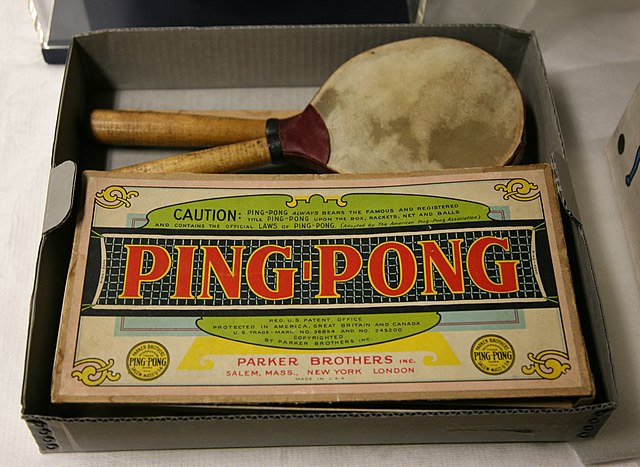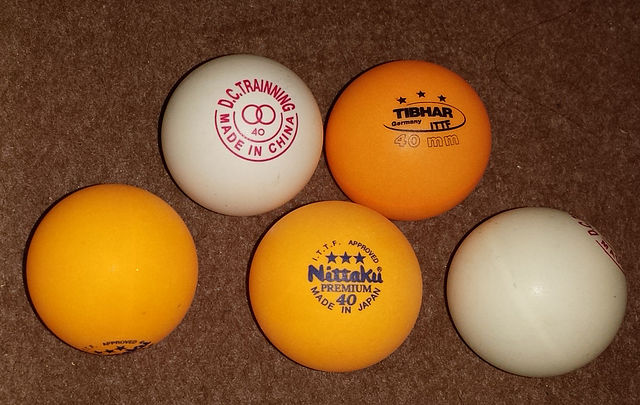Para table tennis is a parasports which follows the rules set by the International Table Tennis Federation (ITTF). The usual table tennis rules are in effect with slight modifications for wheelchair athletes. Athletes from disability groups can take part. Athletes receive classifications between 1 and 11. Classes 1–5 are for those in wheelchairs and classes 6–10 for those who have disabilities that allow them to play standing. Within those groups, the higher classification means the more function the athlete has. Class 11 is defined for players with an intellectual disability.
Table tennis at the 1992 Summer Paralympics.
Four-time Olympian Natalia Partyka participates in Class 10 events at the para table tennis tournaments.
Table tennis is a racket sport derived from tennis but distinguished by its playing surface being atop a stationary table, rather than the court on which players stand. Either individually or in teams of two, players take alternating turns returning a light, hollow ball over the table's net onto the opposing half of the court using small rackets until they fail to do so, which results in a point for the opponent. Play is fast, requiring quick reaction and constant attention, and is characterized by an emphasis on spin relative to other ball sports, which can heavily affect the ball's trajectory.
Table tennis at Liga Pro
Parker Brothers Ping-Pong game
Assortment of 40 mm table tennis balls
Table Tennis Plastic Balls 40+ mm with ITTF approval






